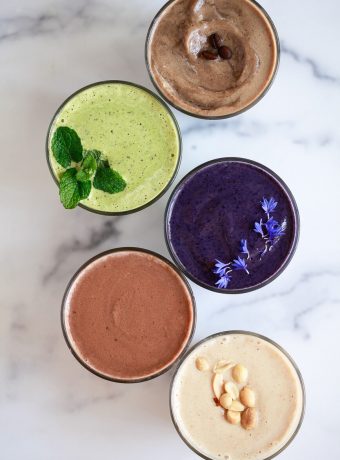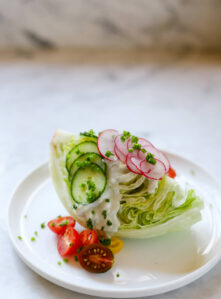How to Make Water Kefir
Also known as agua de kefir, water kefir is a delicious and nutritious fermented beverage. It’s easy and fun to make probiotic soda at home!
While you can pick up a bottle of kombucha, probiotic soda, or water kefir at most grocery stores these days, it’s easy to make at home and much less expensive. Like sourdough, once you have the starter going, you’ll have an endless supply.
If you’ve ever wondered, ‘What is kefir?’ or how to make your own refreshing, gut-friendly fermented drink at home, you’re in the right place. Also called agua de kefir, it is a lightly sweet, naturally carbonated beverage made by fermenting sugar water with live kefir grains. It’s a great dairy-free alternative to milk kefir, and it’s surprisingly simple to make with just a few ingredients. In this post, I’ll walk you through how to make water kefir in your own kitchen.
Why Try Fermenting?
Fermentation is one of the oldest methods for preserving and preparing food. It’s a natural process that relies on wild bacteria and yeast. Fermented foods, such as water kefir, sauerkraut, and sourdough, have supported gut health and digestion for centuries. If you’re new to fermenting, water kefir is a great place to start. It’s simple, quick, and much less work than other ferments.
What is Kefir?
Kefir is a naturally fermented drink packed with probiotics, enzymes, and beneficial acids. It’s usually made with milk, but dairy-free versions are also available. Kefir has been used for thousands of years to support energy, digestion, and overall health.
 Kefir Grains
Kefir Grains
The origins of kefir grains are still a mystery. Milk kefir is thought to have come from the Caucasus Mountains, where people passed down these tiny, cauliflower-like clusters of bacteria and yeast used to ferment milk. Despite the name, kefir grains aren’t actual grains but living colonies of microbes.
What makes them unique is that they can’t be created from scratch. Unlike sourdough or yogurt, kefir grains only come from other grains. Scientists have tried to replicate them in labs but haven’t been able to recreate the same results.
Traditionally made with raw milk, kefir is now also enjoyed in a dairy-free version: water kefir. It’s a lightly sweet, naturally fizzy drink made by fermenting sugar water with kefir grains.
Kefir Benefits
Kefir, whether made with milk or water, is renowned for its abundance of probiotics, the beneficial bacteria that support a healthy gut microbiome. With up to 40–60 strains of yeast and bacteria, traditional kefir offers more microbial diversity than most probiotic supplements or yogurts.
 How to Make Water Kefir
How to Make Water Kefir
Making water kefir at home is easy and only takes a few basic steps:
- Mix sugar water: Dissolve sugar in filtered water. Most of the sugar is metabolized by the kefir and won’t be present in the final product.
- Add water kefir grains: These live cultures will ferment the sugar water.
- Ferment for 1–2 days: Leave the jar at room temperature. You may or may not see little bubbles at the surface.
- Strain the grains: Once it has a slightly tangy flavor, strain the grains to use for your next batch.
- Optional second ferment: Pour the strained kefir into airtight bottles with fruit or juice and let it sit to carbonate naturally, then refrigerate.
Whether you’re looking to support gut health or cut back on soda, water kefir is a great place to start. It’s naturally probiotic, customizable, and a fun way to get into home fermentation. Once you get the hang of it, you’ll likely find yourself keeping a continuous batch going on your counter.
More Wellness Beverages
Water Kefir (Agua de Kefir)
Learn how to make water kefir at home with this simple, step-by-step recipe. Also known as agua de kefir, this dairy-free fermented drink is made by combining sugar water with live kefir grains. In just a few days, you'll have a naturally bubbly, probiotic-rich beverage that's great for gut health. This beginner-friendly recipe is customizable with your favorite fruits and flavors during a second ferment.

Ingredients
First Ferment
- 70 grams (about 1/4 cup) live water kefir grains
- 1/4 cup organic cane sugar
- 3 cups filtered water (free of chlorine and fluoride)
Second Ferment
- 1/4 cup fruit juice or coconut water
- organic liquid stevia (optional)
Instructions
First Ferment
- Refresh your grains: If your water kefir grains are dehydrated or have not been used to brew recently, you'll need to refresh them. Follow the package directions to refresh your particular grains.
- Make the sugar water: Pour ¼ cup of organic cane sugar into a clean quart-size jar. Add 3 cups of filtered water and stir until most of the sugar dissolves.
- Add the kefir grains: Gently place the water kefir grains into the sweet water.
- Cover and ferment: Cover the jar with a breathable cloth, such as cheesecloth, and secure it with a rubber band. Set the jar in a warm area out of direct sunlight. Ideally, around 76–80°F. Let it ferment for 24 to 48 hours. The water kefir will be ready sooner in warm environments and after a few batches, and slower in a cooler environment or when just starting.
- Taste test and monitor: After 24 hours, taste a small spoonful. It should still be sweet but with a subtle yogurt-like tang. The longer it ferments, the less sweet and more tart it becomes. Once it tastes balanced (slightly tangy with a touch of sweetness), it’s ready. This can take between 1 and 3 days. You may see bubbles at the surface, but not necessarily.
- Strain and bottle: Use a mesh strainer to separate the kefir grains from the liquid. Save the grains to start your next batch. Pour the finished water kefir into swing-top bottles using a funnel.
- Drink it plain or flavor it: At this stage, your kefir is lightly fermented and not fizzy. You can store it in the refrigerator and drink it as is, or proceed to a second fermentation to flavor and carbonate it.
Second Ferment
- Bottle: Pour the finished water kefir into swing-top bottles using a funnel, leaving room for 1/4 cup more liquid plus at least an inch of headspace.
- Flavor: Add ¼ cup coconut water or fruit juice per 3 cups of water kefir. Most of this sugar will be metabolized by the bacteria and is necessary for the carbonation process. Add any fresh fruit and/or herbs at this point if desired, leaving at least 1 inch of headspace in the bottles.
- Ferment again: Let the flavored, bottled water kefir ferment for an additional 1-3 days, until it becomes bubbly. The longer you ferment, the more fizzy and less sweet it will become. "Burp" your bottles 1-2 times per day to ensure there is not too much pressure building, which could result in the bottle exploding.
- Refrigerate: Once you've achieved your desired flavor and fizz, refrigerate the water kefir and enjoy. If the final product is not as sweet as you'd like it, add a few drops of liquid stevia or more juice to taste.
Notes
Make sure you use water kefir grains, as milk kefir grains will not work for this recipe.
When activating new grains, it may take a couple of refresher brews before you see much activity. Follow the package instructions to refresh your grains.
You can use coconut sugar, but the water kefir will have a darker color.
Homemade water kefir is best enjoyed for up to 10 days when stored in the refrigerator.
You can make a larger batch by using up to 8 cups of water and 1/2 cup of sugar.
For the second ferment, use a filtered or low-pulp juice—something smooth and free of solids, like POM pomegranate juice. Juices with less pulp tend to carbonate more effectively and produce a cleaner finish.
Favorite 2nd Ferment Flavor Ideas:
- Coconut Mojito: Add 1/4 cup coconut water, half a lime, and fresh mint leaves to the bottle.
- Pomegranate: 1/4 cup pomegranate juice
- Guava: 1/4 cup guava juice
Recommended Products
As an Amazon Associate and member of other affiliate programs, I earn from qualifying purchases.
Nutrition Information:
Yield: 2 Serving Size: 8 oz.Amount Per Serving: Calories: 15Total Fat: 0gCarbohydrates: 8gSugar: 3gProtein: 0g


 Kefir Grains
Kefir Grains
 How to Make Water Kefir
How to Make Water Kefir















